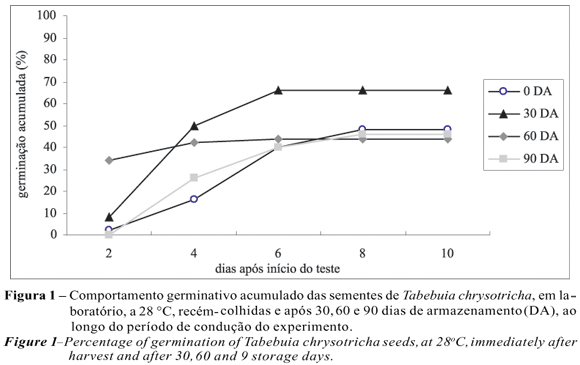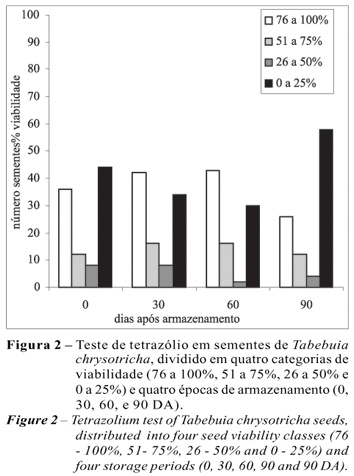The species Tabebuia chrysotricha occurs in the northeastern through southern Brazil in the Atlantic pluvial forest and gallery wood in the cerrado area, disseminated by arborization of streets and squares. Its wood is resistant, used in civil construction, also producing a substance pigment used for silk and cotton dyeing. The aim of this work was to morphologically characterize and analyze the viability and vigor of its seeds, when harvested in a cerrado area. The seeds were measured and germinated postharvest 30, 60 and 90 days after storage under laboratory and field conditions, being also submitted to the tetrazolium test. The seeds measured, on average, 27.8 x 7.2 x 0.3 mm (with wings) and 6.4 x 4.7 x 0.3 mm (without wings). Average weight was 0.40 g (with wings) and 0.31 g (without wings). The seeds presented greater viability under laboratory conditions 30 days after storage and higher percentage of accumulated germination under field conditions, when disseminated on the surface, during post harvest. Seed viability was measured by the tetrazolium test, and presented similar results to those obtained by the germination test, in the laboratory, indicating that it is adequate to measure viability of this species.
Forest seeds; seedling production; germination; Tabebuia chrysotricha




